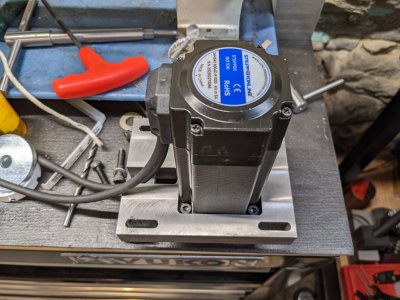- Joined
- Dec 18, 2019
- Messages
- 6,538
The drill guide plate, what does this look like? How would it attached to my plate?There will not be a lot of force on that plate in use. Since you need a very long drill to get past the chip pan, you definitely need to make up a drill guide plate. That is about the only way you will get the holes in the correct position and straight.
As for the holes you already have. Can you make the slots longer and then move both holes toward the center of the mounting plate by about a half inch or so, so that they miss the bad holes and you still have full adjustment range. Clean out the bad holes real good and fill them with JB Weld, no one will ever see them behind the stepper mounting plate.
Think that I can extend the slots a bit and plug the drill holes. But I need a good way to fix the drill guide to the plate and or lathe.


